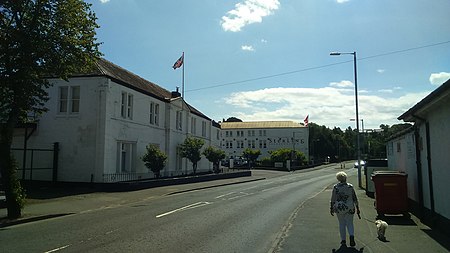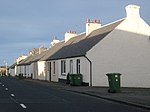Tillicoultry

Tillicoultry ( TIL-ee-KOO-tree; Scottish Gaelic: Tulach Cultraidh, perhaps from older Gaelic Tullich-cul-tir, or "the mount/hill at the back of the country") is a town in Clackmannanshire, Scotland. Tillicoultry is usually referred to as Tilly by the locals. One of the Hillfoots Villages on the A91, which runs from Stirling to St. Andrews, Tillicoultry is situated at the southern base of the Ochil Hills, which provide a spectacular backdrop. The River Devon lies to the south. The river also runs through neighbouring villages Dollar and Alva to the east and west respectively. The former mining village of Coalsnaughton lies just south, whilst Alloa lies 4 miles (6 kilometres) southwest. The "hill" referred to in the first etymology is likely to be Kirkhill, at the east of the town. The alternative Latin etymology, Tellus culta, the cultivated land, suggested by Rev. William Osborne, minister of the parish from 1773 to 1794, is also possible. However, as both etymologies could equally be applied to a hundred places in Scotland, both are suspect, as neither define the town in a unique manner.
Excerpt from the Wikipedia article Tillicoultry (License: CC BY-SA 3.0, Authors, Images).Tillicoultry
Bank Street,
Geographical coordinates (GPS) Address Nearby Places Show on map
Geographical coordinates (GPS)
| Latitude | Longitude |
|---|---|
| N 56.153 ° | E -3.742 ° |
Address
Bank Street
FK13 6DP
Scotland, United Kingdom
Open on Google Maps







